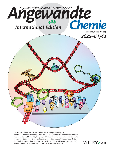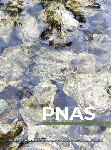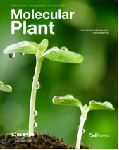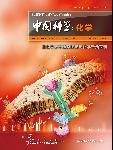Mengze Suna , Baiyan Lub , Ying Yangb, Junping Fana, Weiwei Renc, Xiaonan Chu, Yihui Gaoa, Jun Wub, Jue Wanga,Han Kea,Zhiwen Liub ,Shaojun Daic , Xiaoguang Leia, and Chao Lib,
PNAS2025,122 (45),e2515322122
https://doi.org/10.1073/pnas.2515322122
Since its initial identification as the receptor for Rapid Alkalinization Factor 1 (RALF1), FERONIA (FER) receptor kinase has emerged as a central signaling hub coordi nating plant development, stress adaptation, and immune responses. Nevertheless, fundamental questions persist regarding the precise mechanisms of FER-mediated signal transduction and its context-dependent functional specialization in multicel lular processes. Here, we develop Ferovicin (FRV), a small-molecule inhibitor that specifically disrupts FER kinase activity, thereby enabling mechanistic dissection of FER. Cocrystallization and mutational analysis show that FRV selectively binds to the ATP-binding pocket of the kinase domain of FER and inhibits its kinase activity. Assisted by the FRV tool and quantitative phosphoproteomics, we characterized a series of signaling pathways and networks regulated by RALF1 and FER. Notably, our analysis reveals that RALF1 activates FER through phosphorylation at Ser695, which subsequently inhibits H+ -ATPase1/2 via phosphorylation at Ser899. This mechanism leads to apoplastic alkalinization and regulates cell expansion in the root meristem. Given the conservation of FRV binding sites in FER proteins across land plant species, FRV will serve as a valuable tool for dissecting FER signaling mechanisms as well as facilitating agricultural applications.
Arginine, a critical amino acid for protein structure and function, is involved in enzyme catalysis and macromolecular interactions. However, selectively targeting its reactive guanidine group has been challenging. Here, we utilized a probe, AP-1, based on phenylglyoxal, which demonstrated remarkable chemical selectivity and reactivity toward arginine residues. Using activity-based protein profifiling (ABPP), we explored the human proteome across four cancer cell lines, obtaining quantitative data for approximately 17 000 arginine residues. This analysis led to the identifification of several previously unreported hyperreactive arginine residues, including R43 of PKM, R171 of LDHA, R172 of LDHB, R341 of CKB, R168 of EIF4A1, and R118 of FUBP1, which are crucial for protein function. Notably, the mutation of CKB’s R341 inhibited cell proliferation and migration by downregulating energy supply. We also introduced ArGO-LDHA-1, a covalent inhibitor targeting LDHA’s hyperreactive arginine residues, showing potential to enhance chemotherapy effificacy. This work highlights the biological signifificance of arginine residues and provides a platform for large-scale profifiling of arginine reactivity.
Berberine bridge enzyme (BBE)-like enzymes catalyze various oxidative cyclization and dehydrogenation reactions in natural product biosynthesis, but the molecular mechanism underlying the selectivity remains unknown. Here, we elucidated the catalytic mechanism of BBE-like oxidases from Morus alba involved in the oxidative cyclization and dehydrogenation of moracin C. X-ray crystal structures of a functionally promiscuous flavin adenine dinucleotide (FAD)–bound oxidase, MaDS1, with and without an oxidative dehydrogenation product were determined at 2.03 Å and 2.21 Å resolution, respectively. Structure-guided mutagenesis and sequence analysis have identified a conserved aspartic acid that directs the reaction toward the oxidative dehydrogenation pathway. A combination of density functional theory (DFT) calculations and molecular dynamics (MD) simulations has revealed that aspartic acid acts as the catalytic base to deprotonate the carbon-cation intermediate to generate the dehydrogenated product, which otherwise undergoes a spontaneous 6π electrocyclization in the oxidative cyclization pathway to furnish the 2H-benzopyran product.
Dongshan Wu, Sanshan Wang, Haowen Zhang, Han Ke, Zeying Sun, Shuhan Xie, Yihui Gao, Jun Yang, Bingwu Wang, and Xiaoguang Lei*
J. Am. Chem. Soc. 2025, doi:10.1021/jacs.5c05656
Due to the invaluable properties of organofluorine compounds, incorporating a fluorinated unit has become necessary in pharmaceuticals, agrochemicals, and materials. However, achieving asymmetric fluorination such as trifluoromethylation through chemo- or biocatalysis has been a synthetic challenge. Here, we introduce a unique cooperative photoenzymatic catalysis for the enantioselective fluoroalkylation/cyclization cascade. This method, utilizing the engineered flavin-dependent “ene”-reductases (EREDs) and an exogenous photocatalyst (PC), produces a variety of fluorinated cyclic ketones with high yield and enantioselectivity. The discovery of stereocomplementary enzymes that provide access to both enantiomers of the cyclized products further enhances the synthetic applications of our method. The radical-trapping, spectroscopic, and kinetic studies have substantiated the interaction mode between the PC and the enzyme and demonstrated a cascade reaction mechanism involving a unique intermolecular addition of fluorinated radicals and a stereocontrolled intramolecular cyclization. Isotopic labeling experiments support flavin as the source of the hydrogen atom. Molecular dynamics simulations reveal that the binding interaction of the enzyme and the intermediate triggers the photoinduced enantioselective cyclization. This work underscores the potential of enzymes for the asymmetric synthesis of fluorinated compounds.
Dongshan Wu,† Zeying Sun,† Sanshan Wang, Jun Yang, Jingyuan He, and Xiaoguang Lei*
JACS Au 2025, doi:10.1021/jacsau.5c00633
Organic nitriles are significant in pharmaceuticals, agrochemicals, cosmetics, and materials. Although numerous cyanidation methods have been developed, more eco-friendly and green protocols for manufacturing alkyl nitriles are in high demand. Here, we report a photoenzymatic enantioselective intermolecular hydrocyanoalkylation of alkenes catalyzed by flavin-dependent “ene”-reductases. The discovery of stereocomplementary enzymes that provide access to both enantiomers of the high-value nitriles further showcases the synthetic applications of this method. Radical trapping, isotopic labeling, and spectroscopic experiments have elucidated the formation of a charge transfer complex at the protein active site. The single-electron reduction of the cyanoalkyl radical precursor by flavin hydroquinone yields a cyanoalkyl radical, which then undergoes intermolecular radical addition. This active site can stereoselectively control the radical-terminating hydrogen atom transfer, enabling the synthesis of enantioenriched γ-stereogenic nitriles. This work further expands the reactivity repertoire of biocatalytic transformations via non-natural radical mechanisms.
Auxin regulates many aspects of plant growth and development, featuring polar auxin transport mediated by auxin efflux and influx carriers. AUX1 is the prominent auxin importer that actively takes up natural and synthetic auxins. However, the precise mechanisms by which AUX1 recognizes and transports auxin remain elusive. Here, we describe the cryo-electron microscopy structures of Arabidopsis thaliana AUX1 in apo and auxin-bound forms, revealing the structural basis for auxin recognition. AUX1 assumes the LeuT-like fold in an inward conformation. The auxin analogue 2,4-D is recognized by polar residues in the middle of AUX1. We identify a putative cation site in AUX1, which plays a role in stabilizing the inward-facing conformation. His249 undergoes a large conformational shift, and mutation of it completely abolished transport activity, suggesting a crucial role of His249 in AUX1 gating. Together, this study provides a structural foundation for a deeper comprehension of auxin influx by AUX1-like carriers.
Xiaojiao Guo, Lei Gao, Shiwei Li, Jing Gao, Yuanyuan Wang, Jing Lv, Jiayi Wei, Jing Yang, Han Ke, Qi Ding, Jun Yang, Fusheng Guo, Haowen Zhang, Xiaoguang Lei & Le Kang
Nature (2025). DOI: 10.1038/s41586-025-09110-y
Aggregation pheromone, 4-vinylanisole (4VA), is specifically released by gregarious migratory locusts, and is crucial in forming locust swarms that cause destructive plagues1. Control of locust plagues relies heavily on the extensive application of chemical pesticides, which has led to severe environmental and health issues2. As pheromones are primary mediators of insect communication and behaviour3, exploring their biosynthesis can provide important cues to develop innovative behavioural regulators, potentially reducing the reliance on chemical pesticides. Here we resolve the biosynthesis of 4VA and behavioural responses of locusts when enzymes in the 4VA biosynthetic pathway are manipulated. The process initiates with phenylalanine derived from food plants and proceeds through three precursors: cinnamic acid, p-hydroxycinnamic acid and 4-vinylphenol (4VP). Notably, the conversion from 4VP to 4VA through methylation is unique to gregarious locusts. This step is catalysed by two crucial methyltransferases, 4VPMT1 and 4VPMT2. Guided by the X-ray co-crystal structure of 4VPMT2 bound with 4VP and S-adenosyl-L-methionine, we developed 4-nitrophenol as a substrate surrogate. We identified several chemicals that can block 4VA production by inhibiting the enzymatic activities of 4VPMT proteins, thereby suppressing locust aggregative behaviour. The findings uncover the chemical logic behind 4VA biosynthesis and pinpoint two crucial enzymes as novel targets for locust swarm management.
Jun Yang, Yuling Zhu, Yunxi Han, Han Ke, Jing Zhang, Ming-Wei Wang, Xiaoguang Lei*
ACS Catal. 2025, 15, 11664–11672
Trichothecenes, particularly T-2 toxin (T-2), pose significant threats to food safety as well as to both animal and human health. Although Fhb7 and its variants have been utilized for deoxynivalenol degradation, no enzyme with efficient T-2 degradation activity has been reported. Herein, we generated five enzymes derived from Fhb7 that are capable of T-2 degradation via ancestral sequence reconstruction. Among these, N1, N2, and N4 exhibited superior catalytic activity toward T-2 compared to the parent enzyme Fhb7 and its variants. Structural analyses revealed that residue F27 provides a hydrophobic environment for accommodation of the unique 3-methylbutyryl group of T-2. In addition, the long insertion loop of N2 plays a key role in its improved substrate preference. Furthermore, all the ancestors displayed remarkable thermostability, with N2 and N4 displaying superior thermal tolerance (Tm values are 54 and 59 °C, respectively, and their half-life times are longer than 90 h), positioning them as a promising candidate for industrial applications. This work introduces a promising enzymatic approach for T-2 degradation and lays a foundation for developing robust biocatalysts for the environmental and industrial bioremediation of mycotoxins.
With the continuous elucidation of biosynthetic enzymes for natural products, the application of enzymes asunique biological resources in the total synthesis of natural products has become increasingly widespread, driving thechemoenzymatic strategy to emerge as a research hotspot in this field. The use of enzymes not only enhances theprecision and efficiency of natural product synthesis but also expands the boundaries of traditional chemical synthesis,promoting the in-depth development and utilization of natural product resources. Based on the research practices of ourgroup and representative work from other domestic groups over the past three years, this article systematicallysummarizes the three major application dimensions of enzyme-catalyzed reactions in natural product synthesis:providing new synthetic starting points, driving the construction of complex scaffolds, and facilitating precise late-stagemodifications. This provides a reference for the further application of enzyme resources in natural product synthesis.
Transcription factors (TFs) play essential roles in cancer and metabolic diseases, and targeting TFs with small molecules remains a significant challenge. The TF PU.1 is critical for maintaining leukemia initiation cells (LICs) “stemness” in acute T cell lymphoblastic leukemia (T-ALL) and is also a key regulator of fibroblast polarization and organ fibrosis. Herein we rationally designed and synthesized a variety of diamidines with rigid and AT-selective linkers as PU.1 inhibitors. The compound PKU0140 displayed the highest potency in reducing the expression of PU.1 target genes. Significantly, PKU0140 allosterically disrupted the PU.1-chromatin interaction by binding to the minor groove of DNA. In the Pten-null T-ALL mouse model, PKU0140, combined with rapamycin, could significantly decrease leukemic blasts and LICs, alleviate leukemia progression, and prolong the survival of mice. Furthermore, PKU0140 showed preventive and therapeutic effects on fibrotic lesions in various organs by inhibiting the activation of myofibroblasts. This work provides a new small-molecule PU.1 inhibitor with the potential for the treatment of T-ALL and organ fibrosis.
-

-

-

-

-

-

-

-

-

-

Unveiling FERONIA receptor kinase–mediated cellular mechanisms with a small-molecule inhibitor
Mengze Suna , Baiyan Lub , Ying Yangb, Junping Fana, Weiwei Renc, Xiaonan Chu, Yihui Gaoa, Jun Wub, Jue Wanga,Han Kea,Zhiwen Liub ,Shaojun Daic , Xiaoguang Leia, and Chao Lib,
PNAS2025,122 (45),e2515322122
https://doi.org/10.1073/pnas.2515322122
Since its initial identification as the receptor for Rapid Alkalinization Factor 1 (RALF1), FERONIA (FER) receptor kinase has emerged as a central signaling hub coordi nating plant development, stress adaptation, and immune responses. Nevertheless, fundamental questions persist regarding the precise mechanisms of FER-mediated signal transduction and its context-dependent functional specialization in multicel lular processes. Here, we develop Ferovicin (FRV), a small-molecule inhibitor that specifically disrupts FER kinase activity, thereby enabling mechanistic dissection of FER. Cocrystallization and mutational analysis show that FRV selectively binds to the ATP-binding pocket of the kinase domain of FER and inhibits its kinase activity. Assisted by the FRV tool and quantitative phosphoproteomics, we characterized a series of signaling pathways and networks regulated by RALF1 and FER. Notably, our analysis reveals that RALF1 activates FER through phosphorylation at Ser695, which subsequently inhibits H+ -ATPase1/2 via phosphorylation at Ser899. This mechanism leads to apoplastic alkalinization and regulates cell expansion in the root meristem. Given the conservation of FRV binding sites in FER proteins across land plant species, FRV will serve as a valuable tool for dissecting FER signaling mechanisms as well as facilitating agricultural applications.
Quantitative Reactivity Profiling of Functional Arginine Residues in Human Cancer Cell Line Proteomes
Wenbo Zhao+, Yuliang Tang+, Yihui Gao, Qi Ding, Qiang Li, Wenyang Li, and Xiaoguang Lei*
Angew. Chem. Int. Ed. 2025, e202515603
Arginine, a critical amino acid for protein structure and function, is involved in enzyme catalysis and macromolecular interactions. However, selectively targeting its reactive guanidine group has been challenging. Here, we utilized a probe, AP-1, based on phenylglyoxal, which demonstrated remarkable chemical selectivity and reactivity toward arginine residues. Using activity-based protein profifiling (ABPP), we explored the human proteome across four cancer cell lines, obtaining quantitative data for approximately 17 000 arginine residues. This analysis led to the identifification of several previously unreported hyperreactive arginine residues, including R43 of PKM, R171 of LDHA, R172 of LDHB, R341 of CKB, R168 of EIF4A1, and R118 of FUBP1, which are crucial for protein function. Notably, the mutation of CKB’s R341 inhibited cell proliferation and migration by downregulating energy supply. We also introduced ArGO-LDHA-1, a covalent inhibitor targeting LDHA’s hyperreactive arginine residues, showing potential to
enhance chemotherapy effificacy. This work highlights the biological signifificance of arginine residues and provides a platform for large-scale profifiling of arginine reactivity.
Aspartic acid residues in BBE-like enzymes from Morus alba promote a function shift from oxidative cyclization to dehydrogenation
Nianxin Guo, Jun Gu, Qingyang Zhou, Fang Liu, Haoran Dong, Qi Ding, Qixuan Wang, Dongshan Wu, Jun Yang, Junping Fan, Lei Gao*, Kendall N. Houk*, and Xiaoguang Lei*
PNAS, 2025, 122 (34) e2504346122. DOI: 10.1073/pnas.2504346122
Berberine bridge enzyme (BBE)-like enzymes catalyze various oxidative cyclization and dehydrogenation reactions in natural product biosynthesis, but the molecular mechanism underlying the selectivity remains unknown. Here, we elucidated the catalytic mechanism of BBE-like oxidases from Morus alba involved in the oxidative cyclization and dehydrogenation of moracin C. X-ray crystal structures of a functionally promiscuous flavin adenine dinucleotide (FAD)–bound oxidase, MaDS1, with and without an oxidative dehydrogenation product were determined at 2.03 Å and 2.21 Å resolution, respectively. Structure-guided mutagenesis and sequence analysis have identified a conserved aspartic acid that directs the reaction toward the oxidative dehydrogenation pathway. A combination of density functional theory (DFT) calculations and molecular dynamics (MD) simulations has revealed that aspartic acid acts as the catalytic base to deprotonate the carbon-cation intermediate to generate the dehydrogenated product, which otherwise undergoes a spontaneous 6π electrocyclization in the oxidative cyclization pathway to furnish the 2H-benzopyran product.
Cooperative Photoenzymatic Catalysis for Enantioselective Fluoroalkylation/Cyclization Cascade
Dongshan Wu, Sanshan Wang, Haowen Zhang, Han Ke, Zeying Sun, Shuhan Xie, Yihui Gao, Jun Yang,
Bingwu Wang, and Xiaoguang Lei*
J. Am. Chem. Soc. 2025, doi:10.1021/jacs.5c05656
Due to the invaluable properties of organofluorine compounds, incorporating a fluorinated unit has become necessary in pharmaceuticals, agrochemicals, and materials. However, achieving asymmetric fluorination such as trifluoromethylation through chemo- or biocatalysis has been a synthetic challenge. Here, we introduce a unique cooperative photoenzymatic catalysis for the enantioselective fluoroalkylation/cyclization cascade. This method, utilizing the engineered flavin-dependent “ene”-reductases (EREDs) and an exogenous photocatalyst (PC), produces a variety of fluorinated cyclic ketones with high yield and enantioselectivity. The discovery of stereocomplementary enzymes that provide access to both enantiomers of the cyclized products further enhances the synthetic applications of our method. The radical-trapping, spectroscopic, and kinetic studies have substantiated the interaction mode between the PC and the enzyme and demonstrated a cascade reaction mechanism involving a unique intermolecular addition of fluorinated radicals and a stereocontrolled intramolecular cyclization. Isotopic labeling experiments support flavin as the source of the hydrogen atom. Molecular dynamics simulations reveal that the binding interaction of the enzyme and the intermediate triggers the photoinduced enantioselective cyclization. This work underscores the potential of enzymes for the asymmetric synthesis of fluorinated compounds.
Enantioselective Radical Hydrocyanoalkylation of Alkenes via Photoenzymatic Catalysis
Dongshan Wu,† Zeying Sun,† Sanshan Wang, Jun Yang, Jingyuan He, and Xiaoguang Lei*
JACS Au 2025, doi:10.1021/jacsau.5c00633
Organic nitriles are significant in pharmaceuticals, agrochemicals, cosmetics, and materials. Although numerous cyanidation methods have been developed, more eco-friendly and green protocols for manufacturing alkyl nitriles are in high demand. Here, we report a photoenzymatic enantioselective intermolecular hydrocyanoalkylation of alkenes catalyzed by flavin-dependent “ene”-reductases. The discovery of stereocomplementary enzymes that provide access to both enantiomers of the high-value nitriles further showcases the synthetic applications of this method. Radical trapping, isotopic labeling, and spectroscopic experiments have elucidated the formation of a charge transfer complex at the protein active site. The single-electron reduction of the cyanoalkyl radical precursor by flavin hydroquinone yields a cyanoalkyl radical, which then undergoes intermolecular radical addition. This active site can stereoselectively control the radical-terminating hydrogen atom transfer, enabling the synthesis of enantioenriched γ-stereogenic nitriles. This work further expands the reactivity repertoire of biocatalytic transformations via non-natural radical mechanisms.
Structural basis of auxin recognition and transport in plant influx carrier AUX1
Huiwen Chen1, Junping Fan1, Cheng Chi1, Jun Zhao, Di Wu, Xiaoguang Lei*, Xingwang Deng*, Daohua Jiang*
Molecular Plant, 2025.
doi.org/10.1016/j.molp.2025.06.015
Auxin regulates many aspects of plant growth and development, featuring polar auxin transport mediated by auxin efflux and influx carriers. AUX1 is the prominent auxin importer that actively takes up natural and synthetic auxins. However, the precise mechanisms by which AUX1 recognizes and transports auxin remain elusive. Here, we describe the cryo-electron microscopy structures of Arabidopsis thaliana AUX1 in apo and auxin-bound forms, revealing the structural basis for auxin recognition. AUX1 assumes the LeuT-like fold in an inward conformation. The auxin analogue 2,4-D is recognized by polar residues in the middle of AUX1. We identify a putative cation site in AUX1, which plays a role in stabilizing the inward-facing conformation. His249 undergoes a large conformational shift, and mutation of it completely abolished transport activity, suggesting a crucial role of His249 in AUX1 gating. Together, this study provides a structural foundation for a deeper comprehension of auxin influx by AUX1-like carriers.
Decoding 4-vinylanisole biosynthesis and pivotal enzymes in locusts
Xiaojiao Guo, Lei Gao, Shiwei Li, Jing Gao, Yuanyuan Wang, Jing Lv, Jiayi Wei, Jing Yang, Han Ke, Qi Ding, Jun Yang, Fusheng Guo, Haowen Zhang, Xiaoguang Lei & Le Kang
Nature (2025). DOI: 10.1038/s41586-025-09110-y
Aggregation pheromone, 4-vinylanisole (4VA), is specifically released by gregarious migratory locusts, and is crucial in forming locust swarms that cause destructive plagues1. Control of locust plagues relies heavily on the extensive application of chemical pesticides, which has led to severe environmental and health issues2. As pheromones are primary mediators of insect communication and behaviour3, exploring their biosynthesis can provide important cues to develop innovative behavioural regulators, potentially reducing the reliance on chemical pesticides. Here we resolve the biosynthesis of 4VA and behavioural responses of locusts when enzymes in the 4VA biosynthetic pathway are manipulated. The process initiates with phenylalanine derived from food plants and proceeds through three precursors: cinnamic acid, p-hydroxycinnamic acid and 4-vinylphenol (4VP). Notably, the conversion from 4VP to 4VA through methylation is unique to gregarious locusts. This step is catalysed by two crucial methyltransferases, 4VPMT1 and 4VPMT2. Guided by the X-ray co-crystal structure of 4VPMT2 bound with 4VP and S-adenosyl-L-methionine, we developed 4-nitrophenol as a substrate surrogate. We identified several chemicals that can block 4VA production by inhibiting the enzymatic activities of 4VPMT proteins, thereby suppressing locust aggregative behaviour. The findings uncover the chemical logic behind 4VA biosynthesis and pinpoint two crucial enzymes as novel targets for locust swarm management.
Developing Fhb7-Derived Enzymes with High Thermostability for Detoxification of T-2 Toxin through Ancestral Sequence Reconstruction
Jun Yang, Yuling Zhu, Yunxi Han, Han Ke, Jing Zhang, Ming-Wei Wang, Xiaoguang Lei*
ACS Catal. 2025, 15, 11664–11672
Trichothecenes, particularly T-2 toxin (T-2), pose significant threats to food safety as well as to both animal and human health. Although Fhb7 and its variants have been utilized for deoxynivalenol degradation, no enzyme with efficient T-2 degradation activity has been reported. Herein, we generated five enzymes derived from Fhb7 that are capable of T-2 degradation via ancestral sequence reconstruction. Among these, N1, N2, and N4 exhibited superior catalytic activity toward T-2 compared to the parent enzyme Fhb7 and its variants. Structural analyses revealed that residue F27 provides a hydrophobic environment for accommodation of the unique 3-methylbutyryl group of T-2. In addition, the long insertion loop of N2 plays a key role in its improved substrate preference. Furthermore, all the ancestors displayed remarkable thermostability, with N2 and N4 displaying superior thermal tolerance (Tm values are 54 and 59 °C, respectively, and their half-life times are longer than 90 h), positioning them as a promising candidate for industrial applications. This work introduces a promising enzymatic approach for T-2 degradation and lays a foundation for developing robust biocatalysts for the environmental and industrial bioremediation of mycotoxins.
The application of enzyme resources in the synthesis of natural products
Jin Wang, Haoran Dong, Xiaoguang Lei
SCIENTIA SINICA Chimica, 2025, 55(5): 1196-1202.
With the continuous elucidation of biosynthetic enzymes for natural products, the application of enzymes asunique biological resources in the total synthesis of natural products has become increasingly widespread, driving thechemoenzymatic strategy to emerge as a research hotspot in this field. The use of enzymes not only enhances theprecision and efficiency of natural product synthesis but also expands the boundaries of traditional chemical synthesis,promoting the in-depth development and utilization of natural product resources. Based on the research practices of ourgroup and representative work from other domestic groups over the past three years, this article systematicallysummarizes the three major application dimensions of enzyme-catalyzed reactions in natural product synthesis:providing new synthetic starting points, driving the construction of complex scaffolds, and facilitating precise late-stagemodifications. This provides a reference for the further application of enzyme resources in natural product synthesis.
Small-Molecule Inhibitors of Transcription Factor PU.1 for the Treatment of Acute T Cell Lymphoblastic Leukemia and Organ Fibrosis
Xin Wang, Liuzhen Zhang, Fusheng Guo, Ningning Yao, Zhenpeng Wu, Libing He, Dan Xu,Haichuan Zhu, Zhou Gong, Shuai Yang, Wenjun Xie, Yafen Wang, Liyun Zhang, Xiang Zhou10, Chun Tang,Rong Mu, Hong Wu* & Xiaoguang Lei*
CCS Chem. 2025, Just Published.
Transcription factors (TFs) play essential roles in cancer and metabolic diseases, and targeting TFs with small molecules remains a significant challenge. The TF PU.1 is critical for maintaining leukemia initiation cells (LICs) “stemness” in acute T cell lymphoblastic leukemia (T-ALL) and is also a key regulator of fibroblast polarization and organ fibrosis. Herein we rationally designed and synthesized a variety of diamidines with rigid and AT-selective linkers as PU.1 inhibitors. The compound PKU0140 displayed the highest potency in reducing the expression of PU.1 target genes. Significantly, PKU0140 allosterically disrupted the PU.1-chromatin interaction by binding to the minor groove of DNA. In the Pten-null T-ALL mouse model, PKU0140, combined with rapamycin, could significantly decrease leukemic blasts and LICs, alleviate leukemia progression, and prolong the survival of mice. Furthermore, PKU0140 showed preventive and therapeutic effects on fibrotic lesions in various organs by inhibiting the activation of myofibroblasts. This work provides a new small-molecule PU.1 inhibitor with the potential for the treatment of T-ALL and organ fibrosis.